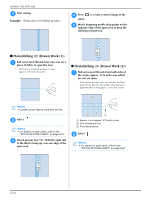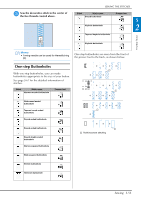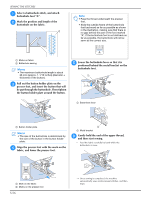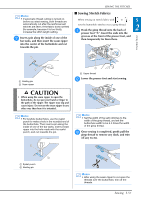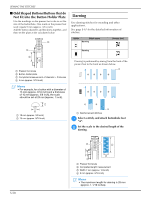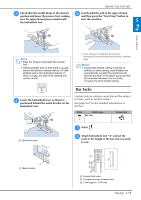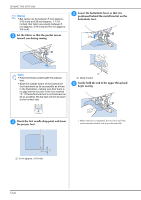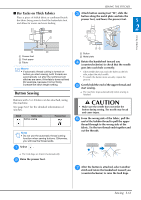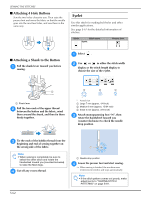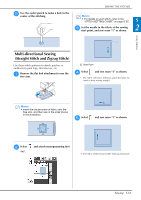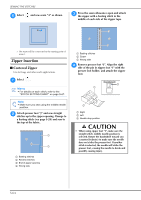Brother International DreamWeaver„ VQ3000 Users Manual - English - Page 131
Bar Tacks
 |
View all Brother International DreamWeaver„ VQ3000 manuals
Add to My Manuals
Save this manual to your list of manuals |
Page 131 highlights
SEWING THE STITCHES c Check that the needle drops at the desired position and lower the presser foot, making e Gently hold the end of the upper thread, and then press the "Start/Stop" button to sure the upper thread passes underneath the buttonhole foot. start the machine. S 2 Utility Stitches Note • Pass the thread underneath the presser foot. • Set the presser foot so that there is no gap behind the section marked with an "A" (the shaded area in the illustration below). If there is a gap, the size of the darning will not be correct. → Once sewing is completed, the machine automatically sews reinforcement stitches, and then stops. Memo • If automatic thread cutting is turned on before you start sewing, both threads are automatically cut after the reinforcement stitches are sewn. If the fabric does not feed (for example, because it is too thick), increase the stitch length setting. d Lower the buttonhole lever so that it is positioned behind the metal bracket on the buttonhole foot. Bar Tacks Use bar tacks to reinforce areas that will be subject to strain, such as pocket corners. See page S-67 for the detailed information of stitches. Stitch Stitch name Bar tack Presser foot a Buttonhole lever a Select . b Attach buttonhole scale to the length foot "A" and set the of the bar tack you wish to sew. a Metal bracket a Presser foot scale b Completed length measurement c 5 mm (approx. 3/16 inch) Sewing S-59



